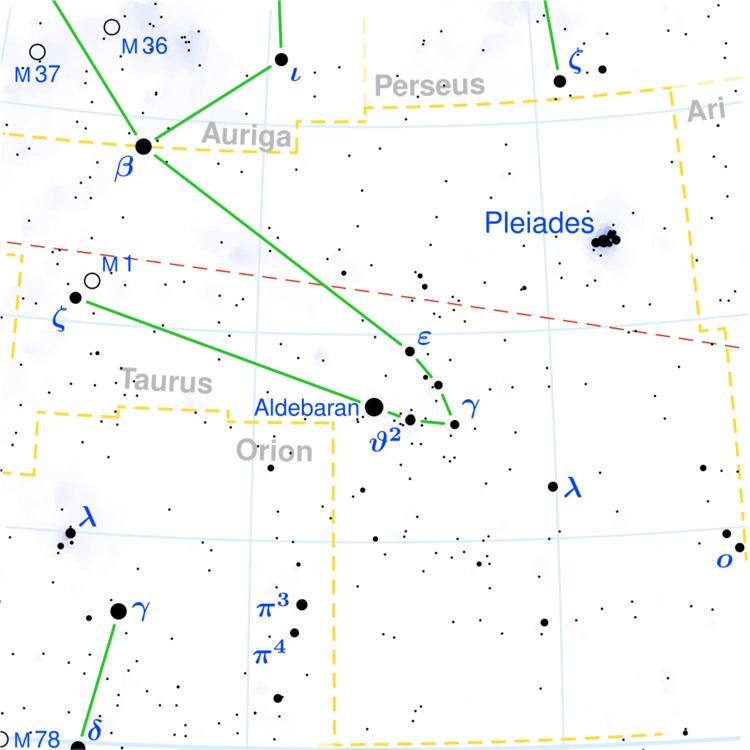Magnitude 2.97 Semimajor axis 1.17 m Apparent magnitude (V) 2.97 | Period 4.4 months Eccentricity 0 | |
 | ||
Similar Gamma Tauri, Delta Tauri, Beta Tauri, SN 1054, Epsilon Tauri | ||
The moon venus zeta tauri
Zeta Tauri (ζ Tau, ζ Tauri) is a binary star in the zodiac constellation Taurus, the Bull. It has an apparent visual magnitude of 3.0, which is bright enough to be seen with the naked eye. Parallax measurements place it at a distance of roughly 440 light-years from the Earth.
Contents
In Chinese astronomy, Zeta Tauri is called 天關, Pinyin: Tiānguān, meaning Celestial Gate, an asterism within the Net (畢宿 Bì Xiù) mansion (see also: Chinese constellation). 天關 (Tiānguān) has also been transliterated as Tien Kwan. Technically, Tiānguān refers not just to Zeta Tauri but to an asterism of which Zeta Tauri is the main star, alongside 113 Tau, 126 Tau, 128 Tau, 129 Tau, 130 Tau and 127 Tau (see Taurus (Chinese astronomy)).
Introducing zeta tauri
Properties
This is a single-lined spectroscopic binary system, which means the two components are orbiting so close to each other that they can not be resolved with a telescope. Instead, the orbital motion of the primary component is indicated by Doppler effect shifts in the absorption lines in its spectrum. The two components are separated by an estimated distance of about 1.17 Astronomical Units, or 117% of the distance from the Earth to the Sun. They are following circular orbits with a period of nearly 133 days.
Compared to the Sun, the primary is an enormous star with more than 11 times the mass and 5–6 times the radius. It is rotating rapidly with a projected rotational velocity of 125 km s−1. The companion has about 94% the mass of the Sun, although it is unknown whether this is a main sequence star, a neutron star, or a white dwarf. If it is a main sequence star, then the mass indicates it may have a stellar classification of G4.
The spectrum of the primary component has a stellar classification of B2 IIIpe. A luminosity class of 'III' indicates this is a giant star that has exhausted the hydrogen at its core and evolved away from the main sequence. The 'e' suffix is used for stars that show emission lines in their spectrum. For Be stars such as this, the emission lines are produced by a rotating circumstellar disk of gas, made of material that has been ejected from the star's outer envelope. An oscillatory pattern in this spectrum is being caused by a single-armed spiral density wave in the disk. The disk may be precessing from the gravitational influence of the secondary component.
ζ Tau shows variation in its spectrum and brightness. The General Catalogue of Variable Stars lists it as an eclipsing variable and γ Cas variable, but it may not be either.
